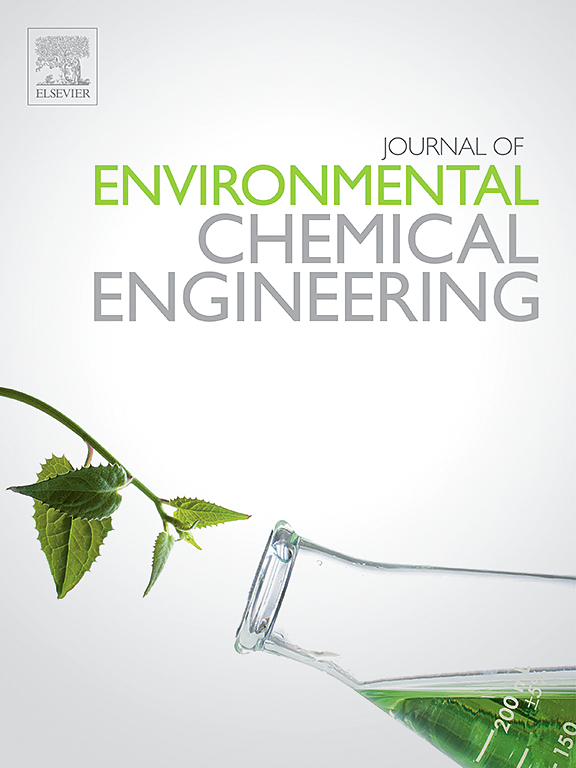Advances in the application of graphene oxide composite loose nanofiltration membranes for dye and salt separation
IF 7.4
2区 工程技术
Q1 ENGINEERING, CHEMICAL
引用次数: 0
Abstract
The wide application of loose nanofiltration (LNF) membranes in textile wastewater treatment has demonstrated the advantages of efficient separation of dyes and salts. Among them, the composite loose nanofiltration membranes prepared using graphene oxide (GO) showed more efficient dye retention and salt permeability due to its broad specific surface area and abundant oxygenated surface functional groups. In this paper, the four aspects of preparation method, separation mechanism, separation performance and application are described. In terms of preparation methods, this paper focuses on two main methods, phase transformation and interfacial polymerization. In addition, other preparation methods such as mussel-inspired deposition, co-deposition and self-assembly are also discussed. In terms of the separation mechanism, spatial repulsion and electrostatic effect are analyzed as the main mechanisms for the separation of dyes and salts by loose nanofiltration membranes. Moreover, this paper emphasizes the excellent contamination resistance, antimicrobial properties and long-term stability of GO composite loose nanofiltration membranes. In response to these properties, the advantages of the membrane in terms of separation performance are analyzed. Finally, this paper also presents the possible future challenges that loose nanofiltration membranes may face in a wide range of applications.
氧化石墨烯复合松散纳滤膜在染料和盐分离方面的应用进展
松散纳滤膜(LNF)在纺织废水处理中的广泛应用证明了其高效分离染料和盐分的优势。其中,利用氧化石墨烯(GO)制备的复合松散纳滤膜因其宽广的比表面积和丰富的含氧表面官能团,显示出更高效的染料截留性和盐分渗透性。本文从制备方法、分离机理、分离性能和应用四个方面进行了阐述。在制备方法方面,本文主要介绍了相变和界面聚合两种方法。此外,还讨论了贻贝启发沉积、共沉积和自组装等其他制备方法。在分离机理方面,分析了空间斥力和静电效应是松散纳滤膜分离染料和盐类的主要机理。此外,本文还强调了 GO 复合松散纳滤膜优异的抗污染性、抗菌性和长期稳定性。针对这些特性,本文分析了该膜在分离性能方面的优势。最后,本文还介绍了松散纳滤膜未来在广泛应用中可能面临的挑战。
本文章由计算机程序翻译,如有差异,请以英文原文为准。
求助全文
约1分钟内获得全文
求助全文
来源期刊

Journal of Environmental Chemical Engineering
Environmental Science-Pollution
CiteScore
11.40
自引率
6.50%
发文量
2017
审稿时长
27 days
期刊介绍:
The Journal of Environmental Chemical Engineering (JECE) serves as a platform for the dissemination of original and innovative research focusing on the advancement of environmentally-friendly, sustainable technologies. JECE emphasizes the transition towards a carbon-neutral circular economy and a self-sufficient bio-based economy. Topics covered include soil, water, wastewater, and air decontamination; pollution monitoring, prevention, and control; advanced analytics, sensors, impact and risk assessment methodologies in environmental chemical engineering; resource recovery (water, nutrients, materials, energy); industrial ecology; valorization of waste streams; waste management (including e-waste); climate-water-energy-food nexus; novel materials for environmental, chemical, and energy applications; sustainability and environmental safety; water digitalization, water data science, and machine learning; process integration and intensification; recent developments in green chemistry for synthesis, catalysis, and energy; and original research on contaminants of emerging concern, persistent chemicals, and priority substances, including microplastics, nanoplastics, nanomaterials, micropollutants, antimicrobial resistance genes, and emerging pathogens (viruses, bacteria, parasites) of environmental significance.
 求助内容:
求助内容: 应助结果提醒方式:
应助结果提醒方式:


